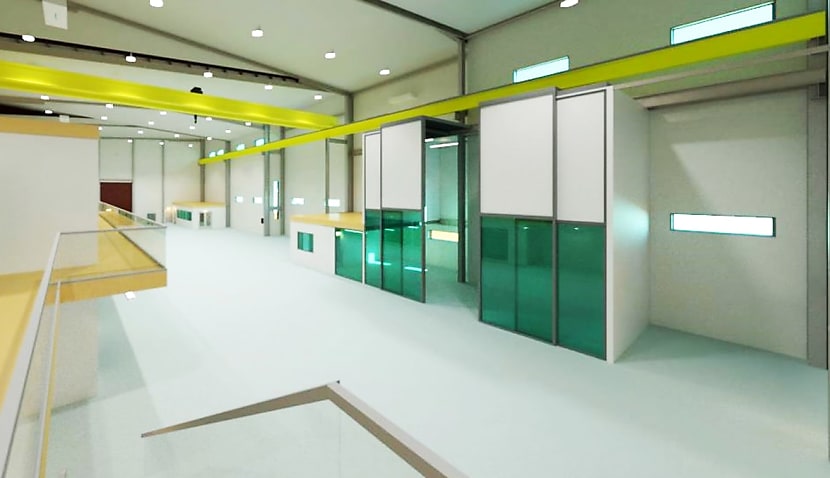
The “rooms”, where rockets are stored and assembled before launch, feature eight-metre-high ceilings and climate control to deal with the harsh NT weather.
It comes after ELA announced last year that a Korean launch company would become the first long-term tenant at its Arnhem Space Centre, with plans to initially accommodate up to seven launch companies at its site concurrently.
ELA chief executive Michael Jones said, “The innovative designs were born from extensive and comprehensive international research on current and past spaceport service offerings and deep discussions with customers on their current and future launch needs, while also considering the needs of regulators, commercial partners, and us as the spaceport operator.
“An example of this is our high clearance ISO 8 cleanroom, which has eight-metre-high ceiling and eight-metre-high sliding doors for vertical payload integration.”
ELA said it went to “extreme lengths” to understand its clients’ needs, and the team visited spaceports worldwide as part of their research.
“Whilst functionality and cost effectiveness are critical in these designs, ELA wanted to make a statement in terms of finishes, aesthetics, and functionality,” said Jones.
“We wanted more than a ‘Colorbond box’ or a just hangar, so we ensured our architects went a little ‘edgy’ and used plenty of angles and a mix of finishes and materials.
“Each of the seven buildings will also be a different colour and be sympathetic to the land in orientation.
“We are putting a lot of effort into the landscaping and vegetation to harmonise with the NT environment.”
The unveiling of the horizontal integration facilities comes after ELA last month revealed the plans for its launch pads, which it believes are so versatile they can be used by multiple clients with minimal changes.
Other key features include technology to minimise damage from rocket plumes, mitigate environmental impacts, and handle launch weights of up to 450,000 kilograms.
The company believes it can eventually accommodate up to seven rocket companies at its site, fuelled by strong demand for satellite launches combined with a lack of supply from traditional rocket companies overseas.
Jones said ELA learned lessons from failed blast-offs to help design its new launch pads.
“Most people didn’t see, but there was a very early version of Starship with the top section coming back,” he said.
“It landed off-centre and had a bit of a residual fire from just the heat that the engine produced.
“Automatic water cannons, for instance, were firing, but missed it because it landed off-centre.
“So I looked at that and went: ‘We really need to have a good system so that we plan for the worst case of having an accident on the pad.’
“So we said let’s have pre-wetting, let’s have large, really efficient water deluge for the period of launch.
“And if we have any residual fire, I want to purge all the oxygen out of it. Nitrogen is the best source of that. And there’s a reason why we use nitrogen, as well as the longer term. In the next 18–24 months, we’re likely to construct a liquid oxygen plant on-site.”

Adam Thorn
Adam is a journalist who has worked for more than 40 prestigious media brands in the UK and Australia. Since 2005, his varied career has included stints as a reporter, copy editor, feature writer and editor for publications as diverse as Fleet Street newspaper The Sunday Times, fashion bible Jones, media and marketing website Mumbrella as well as lifestyle magazines such as GQ, Woman’s Weekly, Men’s Health and Loaded. He joined Momentum Media in early 2020 and currently writes for Australian Aviation and World of Aviation.
Receive the latest developments and updates on Australia’s space industry direct to your inbox. Subscribe today to Space Connect here.









